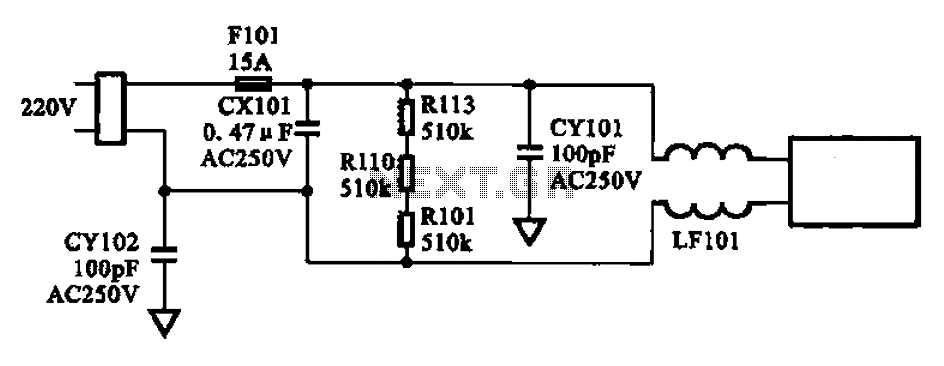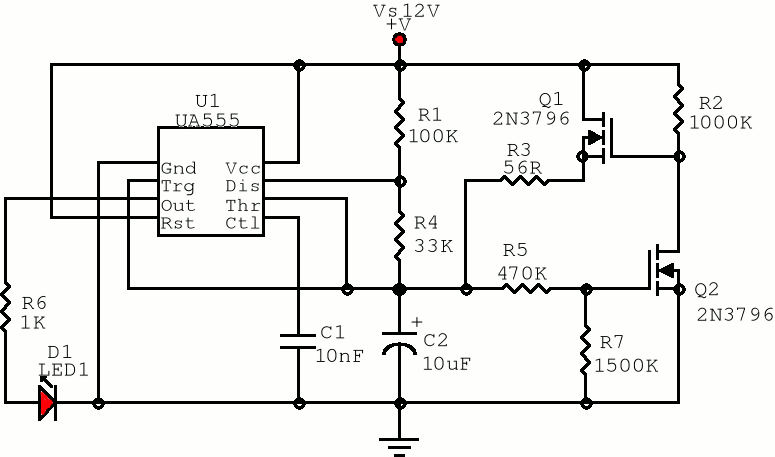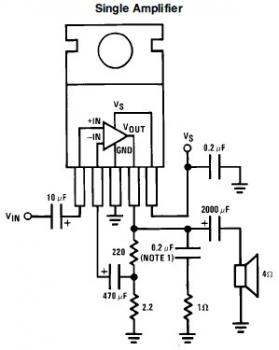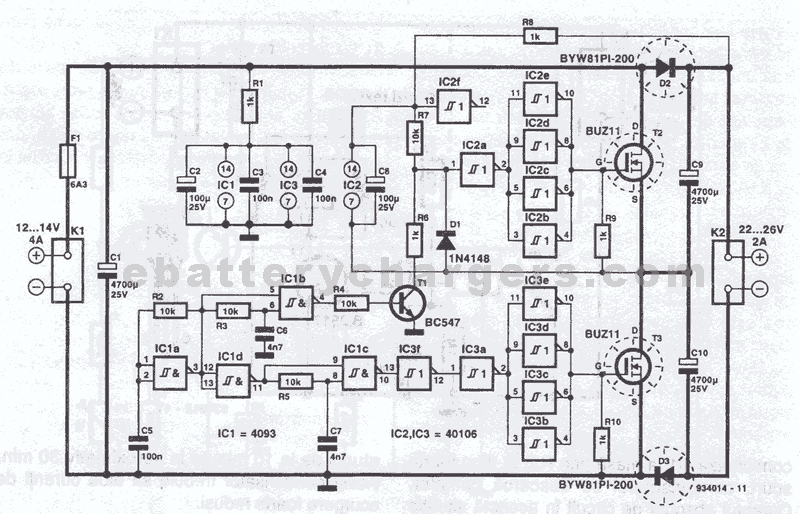
Single pulse signal generating circuit

A single pulse signal generating circuit is depicted, which utilizes switch contacts to create a digital signal for reset or stop functions. This one-shot pulse generating circuit operates as a non-synchronous differential circuit.
The single pulse signal generating circuit, commonly referred to as a monostable multivibrator, is designed to produce a precise output pulse in response to a triggering input. Upon receiving a trigger signal, the circuit transitions from a stable low state to a temporary high state, generating a single pulse of a defined duration before returning to its original state.
The circuit typically includes key components such as resistors, capacitors, and a switching element, which can be a transistor or a logic gate. The duration of the output pulse is determined by the RC time constant, calculated using the resistor (R) and capacitor (C) values in the circuit.
In applications, this circuit can be employed in various digital systems where a reset signal or a stop signal is necessary. For instance, it can be used in timers, counters, or any control systems requiring a momentary signal to trigger an event or reset a state. The non-synchronous nature of the circuit allows it to operate independently of the clock signal, making it versatile for different digital applications.
The design may also include additional features such as debouncing mechanisms for switch contacts to ensure clean signal transitions and prevent false triggering due to mechanical bounce. The output pulse can be tailored for specific applications by adjusting the resistor and capacitor values, providing flexibility in timing applications.
Overall, the single pulse signal generating circuit is a fundamental building block in digital electronics, facilitating precise control and timing functions in various electronic devices.Single pulse signal generating circuit d Shown as a single pulse signal generating circuit, switch contacts such as the use of such a digital signal reset signal or the stop signal is to be formed, this one-shot pulse generating circuit can be used. This circuit is a non-synchronous differential circuit.
The single pulse signal generating circuit, commonly referred to as a monostable multivibrator, is designed to produce a precise output pulse in response to a triggering input. Upon receiving a trigger signal, the circuit transitions from a stable low state to a temporary high state, generating a single pulse of a defined duration before returning to its original state.
The circuit typically includes key components such as resistors, capacitors, and a switching element, which can be a transistor or a logic gate. The duration of the output pulse is determined by the RC time constant, calculated using the resistor (R) and capacitor (C) values in the circuit.
In applications, this circuit can be employed in various digital systems where a reset signal or a stop signal is necessary. For instance, it can be used in timers, counters, or any control systems requiring a momentary signal to trigger an event or reset a state. The non-synchronous nature of the circuit allows it to operate independently of the clock signal, making it versatile for different digital applications.
The design may also include additional features such as debouncing mechanisms for switch contacts to ensure clean signal transitions and prevent false triggering due to mechanical bounce. The output pulse can be tailored for specific applications by adjusting the resistor and capacitor values, providing flexibility in timing applications.
Overall, the single pulse signal generating circuit is a fundamental building block in digital electronics, facilitating precise control and timing functions in various electronic devices.Single pulse signal generating circuit d Shown as a single pulse signal generating circuit, switch contacts such as the use of such a digital signal reset signal or the stop signal is to be formed, this one-shot pulse generating circuit can be used. This circuit is a non-synchronous differential circuit.





